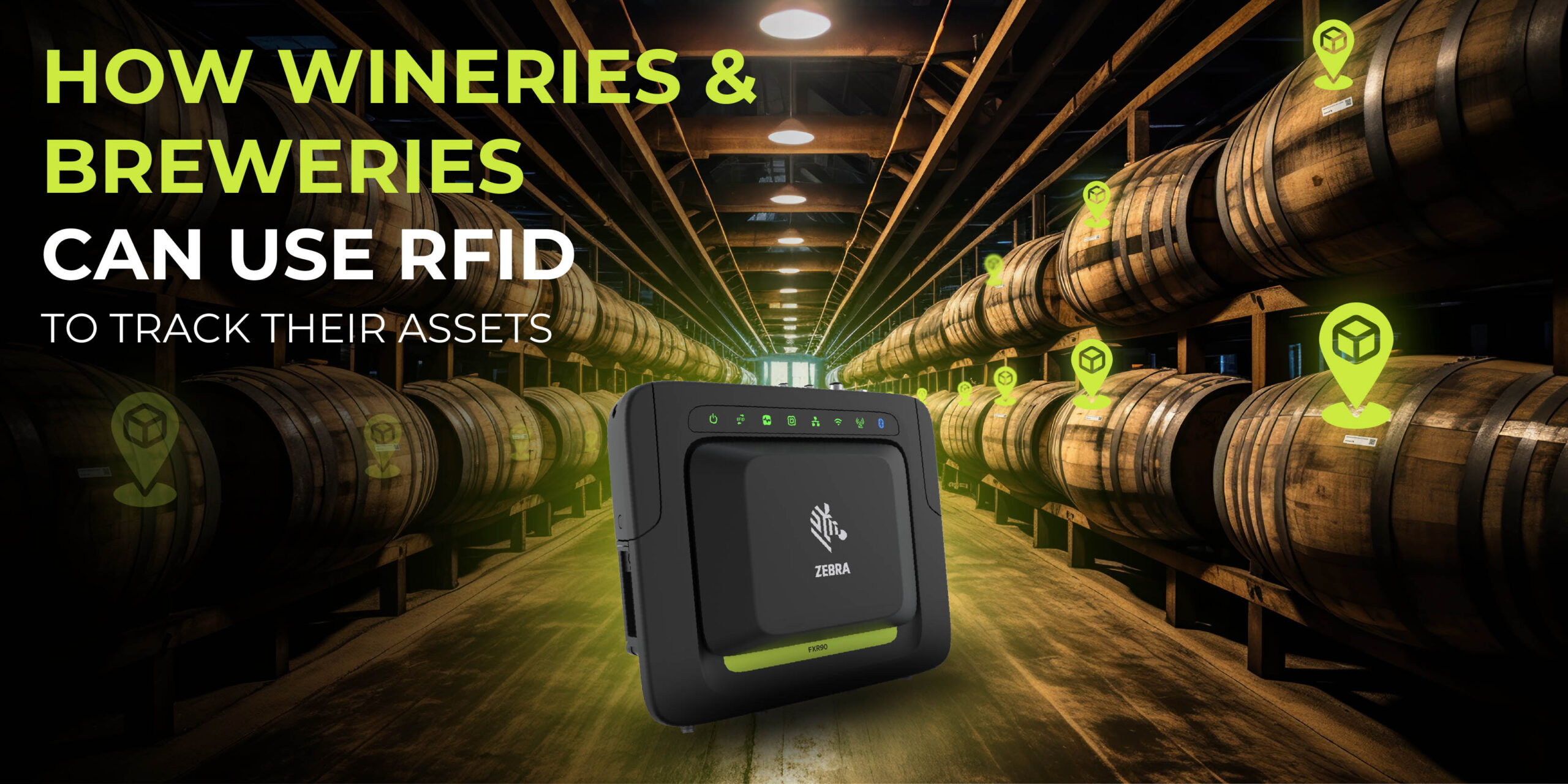Introduction
Wineries and breweries encounter distinct challenges in asset tracking, including the management of extensive inventories like barrels and bottles, as well as the monitoring of valuable equipment. Efficient asset management is essential to maintaining smooth operations. RFID (Radio Frequency Identification) technology offers a transformative solution, enabling real-time tracking, enhancing accuracy, and streamlining processes to optimize asset management in these industries.
How RFID Technology Works in Asset Tracking
RFID technology uses electromagnetic fields to automatically identify and track tags attached to objects. These tags contain electronically stored information that can be read by an RFID reader, even from a distance. Unlike barcodes, which require direct line-of-sight scanning, RFID tags can be read through various materials and over greater distances, making them more versatile and efficient.
In the context of wineries and breweries, RFID tags can be attached to barrels, bottles, equipment, and containers. As these items move through the production process, RFID readers track their location and status in real-time, providing a comprehensive view of all assets.
Key Assets in Wineries and Breweries That Benefit from RFID Tracking
Tracking Barrels and Fermentation Tanks: RFID tags can be used to monitor the aging process of wine in barrels or beer in fermentation tanks. This ensures that each batch is properly tracked from start to finish.
Monitoring Wine and Beer Inventories: By tagging bottles and cases with RFID, wineries, and breweries can maintain accurate inventory counts, reducing the risk of stockouts or overproduction.
Managing Production Equipment and Tools: RFID helps in keeping track of valuable production equipment and tools, ensuring they are always available when needed and reducing the risk of loss.
Keeping Track of Returnable Containers and Kegs: RFID technology simplifies the management of returnable containers and kegs, ensuring they are returned on time and reducing losses.
Benefits of Using RFID in Wineries and Breweries
Enhanced Accuracy and Real-Time Visibility: RFID provides real-time data on the location and status of assets, reducing errors and improving decision-making.
Improved Inventory Management and Reduction of Loss: With RFID, inventory counts are more accurate, and the likelihood of losing assets is significantly reduced.
Streamlined Operations and Increased Productivity: RFID automates many aspects of asset tracking, freeing up staff to focus on more critical tasks and improving overall efficiency.
Better Compliance with Industry Regulations and Standards: RFID helps wineries and breweries maintain compliance with industry standards, particularly in tracking and documenting the production process.
Steps to Implement RFID in Wineries and Breweries

1. Assessment and Planning
Identify Tracking Needs: Start by determining the assets that need tracking, such as raw materials, production stages, inventory, and distribution processes.
Choose RFID Technology: Select between passive, or semi-passive RFID tags based on the range, cost, and specific application. For example, TagMatiks Tool & Instrument RFID Tags can be ideal for tracking tools and equipment in the winery or brewery environment.
2. RFID Tagging Process
Tag Selection: Choose appropriate RFID tags that can withstand the specific environment of your winery or brewery, such as temperature and moisture. Some suitable options include Durable RFID Pallet Tags.
Tag Placement: Carefully place RFID tags on critical items like barrels, bottles, cases, pallets, or equipment to ensure accurate tracking throughout the facility.
Tag Encoding: Encode the RFID tags with essential information, such as batch numbers, production dates, and product details, to streamline tracking and management.
3. Setting Up Infrastructure
Readers and Antennas: Install RFID readers and antennas at key locations, including production lines, storage areas, and shipping docks, to capture data accurately.
Integration with Existing Systems: Integrate the RFID system with existing software, such as TagMatiks Asset Tracking RFID Software, ERP, or WMS, to enable seamless data management and real-time insights.
4. RFID Software Configuration
RFID Middleware: Implement RFID middleware to manage data from the RFID readers and ensure smooth communication between the RFID hardware and your business software.
Tracking Software: Utilize TagMatiks Asset Tracking RFID Software to gain real-time visibility of inventory levels, location tracking, and historical data, enhancing operational efficiency.
5. Training and Implementation
Staff Training: Train your staff on how to effectively use the RFID system, including tagging items, scanning tags, and troubleshooting any issues that arise.
Process Training: Educate employees on the new or updated processes introduced by the RFID system to ensure smooth operations and maximum benefits.
6. Ongoing Monitoring and Analysis
Full Deployment: Roll out the RFID system across the entire winery or brewery, ensuring that all critical areas are covered.
Continuous Monitoring: Regularly monitor the system for accuracy and efficiency, making necessary adjustments to optimize performance and ROI.
Data Analysis: Leverage the data collected through TagMatiks Asset Tracking RFID Software for insights into production efficiency, inventory management, and distribution tracking, driving continuous improvement in your operations.
Conclusion
RFID technology offers wineries and breweries a robust solution for tracking their assets with greater accuracy and efficiency. By implementing RFID, these businesses can improve inventory management, enhance productivity, and reduce losses, ultimately leading to a more streamlined and profitable operation. Whether you’re managing a small winery or a large brewery, RFID asset tracking is a smart investment for the future.
